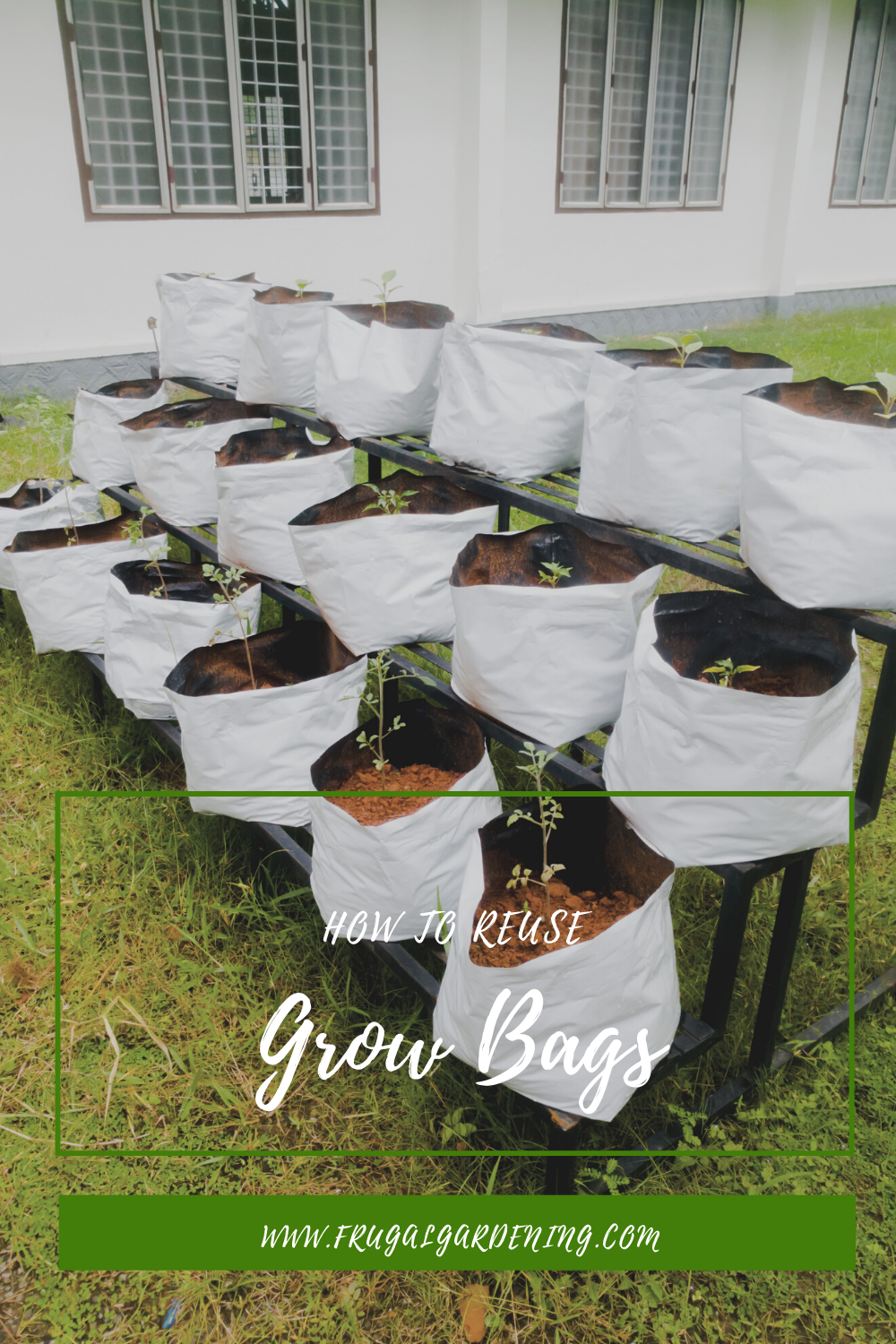
Grow bags are an excellent container option for the frugal gardener. They’re extremely versatile and work for a variety of plants. Did you know that you can reuse them from year to year, too? Here’s how to reuse grow bags and save money down the line.
What is a grow bag?
A grow bag is a flexible container for growing plants. It’s usually made out of a breathable fabric. The breathable material lets air and water through but keeps all your earth neatly contained.
Benefits of using grow bags
Grow bags have a ton of wonderful advantages and are especially useful for frugal gardeners. They are great for:
People on a budget. If you don’t have a lot of money to spend on fancy containers, grow bags are an excellent choice. They’re fairly durable, so you can reuse them for several years.
People without a lot of room. If you have a small space or are gardening on a patio or balcony, grow bags are an excellent option. They’re available in multiple sizes, and when they’re empty, they fold down flat. You can also drag them around in spaces where the light moves around quite a bit, which can help you keep your plants happy.
Temporary gardening spaces. Not sure if you’ll be gardening in the same location next year? Use grow bags! When you’re done, they can come with you. They’re easy to store and transport when empty.
Certain plants. Grow bags are great for growing certain kinds of plants. I’m particularly fond of growing potatoes inside large grow bags. It keeps the potato plants contained, and at the end of the season, I just dump out the earth making it easier to spot ready-to-eat tubers.
Beginner gardeners. If you’re new to gardening, building raised beds or creating an in-ground plot can seem like daunting tasks. Grow bags are easy and convenient growing vessels that require not an ounce of physical labor.
How to reuse grow bags
You’ll get more life out of your grow bags if you empty them and store them in a dry place over the winter. Dump out the earth in your compost bin (or in a raised garden bed, if available) and then rinse, dry, and store your bags for the season.
You can also leave them full of dirt and reuse them next year. You’ll need to mix in fresh compost next season.
However, if any of your plants were diseased or experienced severe pest infestations, you’re better off safe than sorry. Toss out all the dirt and start fresh.
Some grow bags are also safe to toss in the washing machine, which is great if you need to sterilize them once the growing season is done. Never put grow bags in the dryer, though. The heat can cause shrinkage or weaken the fabric.
By reusing your grow bags, you can save money and avoid waste.
If your grow bags rip, don’t throw them away! You can use the pieces as a weed barrier in pots or raised beds.

Steph Coelho is a freelance writer gardening in zone 5b. She is a certified Square Foot Gardener and has taught various garden-related workshops. When she’s not digging in the dirt or writing, she’s cooking up fresh produce, running, or listening to her favorite podcasts.
I learned a lot from this information